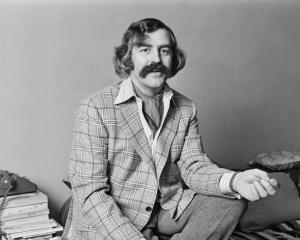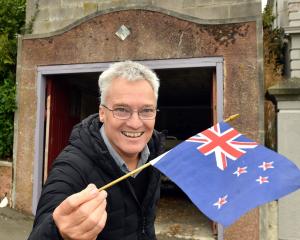
Actor Timothy Spall won plaudits and awards for playing the great British painter J.M.W. Turner on the big screen. The 2014 film, Mr Turner, was partly set in Margate, and it brought the artist's vision of the seaside town to a wider audience, boosting its cultural status. Now Spall has taken on the role of another favourite British artist, L.S. Lowry, in a film that promises to alter the profile of the painter's former hometown, Salford, while enhancing his own reputation.
Adrian Noble, director of the film, believes Lowry's artistry still has the ability to change perceptions.
"You see the world differently because of him," said Noble, a former artistic director of the Royal Shakespeare Company. "One of the great functions of art is that it lets you look at things again. There is a kind of morality in the way Lowry does this."
The film, a screen adaptation of Martyn Hesford's play, also stars Vanessa Redgrave as Lowry's overbearing mother. It concentrates on the last claustrophobic years they spent together in the Pendlebury house they bought in 1908.
A rent collector, Lowry studied art at night, tutored by the French impressionist Adolphe Valette. Once his disapproving mother had fallen asleep each night, he would go upstairs to paint into the early hours of the morning, using both ends of his brushes, his fingers and a limited palette of six colours - ivory, black, vermillion, Prussian blue, yellow ochre and flake white.
"He is a riddle to me in many ways," said Noble, "and the film does not try to entirely solve it. It's about the life of an artist. But I do try to develop the notion he found some artistic freedom in the attic and when he was walking about Salford."
Elizabeth Lowry became depressed and bedridden after the death of her husband and Lowry cared for her until her death in 1939, just before his talent won recognition.
"One of the attractions for me was this extraordinary story of someone so original and gifted, hidden from the world for such a long time," said Noble. "He was effectively in an abusive relationship that prevented him from sharing his art. He became almost a full-time carer and she quite consciously tried to stifle his talent."
Born in 1887 in Stretford, Laurence Stephen Lowry spent his early years in some comfort in Victoria Park, Rusholme. But when he was 22 financial problems forced the family to move to Pendlebury. At first he said he "detested it", but this emotion later grew into a form of artistic obsession with the look of the people, the factories and the chimneys he now found on his doorstep.
"We used some film trickery to show some of the views that inspired Lowry," said Noble. "I moved the location of one or two things to where I knew I could create something authentic."
Playwright Hesford grew up just streets away from Lowry's home and Noble believes the script has caught the cadences of the language of the area perfectly. He, too, would like to see more acknowledgement of the painter's unorthodox talent.
"A new plaque on the Pendlebury home would be a good thing," he said. "I think there are some vestiges of snobbery about Lowry still, especially in the art world."
In the film Lowry's mother poignantly wonders who will remember that either of them existed, two lonely people, once they are dead and their house has been forgotten. The painter reassures her that it will all still be there, contained in his paintings.
- Guardian News and Media












